 |
|
What's Next?
Physicists at Fermilab and throughout the world are contemplating building a powerful new linear collider
by Sharon Butler Europe wants one. Japan wants one. The U.S. wants one, too--a 20-mile linear collider with an energy level in the range of 0.5 to 1.5 trillion electron volts and a luminosity of 1034sec-1cm-2, enough to probe the realm of the Higgs boson and the putative supersymmetric particles. It's already been dubbed the Next Linear Collider. But, concedes Fermilab Director Mike Witherell, "the path to a decision to build a linear collider in this country will...be a long and complicated one." As the first order of business, he said: "The U.S. particle physics community must be able to say that the NLC would be of overwhelming scientific importance, of highest priority for the field and worth the investment for both construction and operation." Reaching that level of commitment requires a solid understanding of the capabilities of such a machine, its cost and its physics promise. Which is, in part, the reason why Fermilab joined the U.S. NLC collaboration last summer. "Of all the possibilities for future facilities--an electron-positron linear collider, a muon storage ring, or a very large hadron collider--the linear collider is the closest to having a proposal for a real machine on the table," said Steve Holmes, associate director for accelerators at Fermilab. "Consequently, the decision of whether--and where--to build one is nearer for the linear collider than for the others. If Fermilab and the U.S. particle physics community are going to make an informed decision, Fermilab needs to be involved in the R&D."
Research and development on a possible NLC have been underway in the U.S. since the mid-1980s, when SLAC, in California, completed construction of its present linear collider and immediately began studying ideas for a next-generation machine. Collaborating with the Japanese particle physics laboratory KEK, SLAC has developed high-powered components for the NLC, including quadrupole magnets to focus the beams, accelerating structures and klystrons. Kystrons are microwave tubes that use the same technology as airport radar systems and microwave ovens, but provide far more energy--a million times more power than an ordinary light bulb, and 75 thousand times the power of a high-end kitchen microwave. In SLAC's concept of the NLC, the power from the klystron tubes would be transferred to a copper accelerating structure and then to the beams, giving the electrons and their antimatter counterparts a powerful kick as they pass along the accelerator's length.
CLIC(diagram), the Compact Linear Collider Study at CERN, in Switzerland, is aiming eventually for much higher energies: 3 to 4 TeV, with a luminosity as high as 1035sec-1cm-2. To achieve those levels, its physicists are trying out more novel, though currently less developed, technologies that would accelerate the beams using very-high-frequency (30-GHz) devices, powered by a drive beam. For all of the new designs, one critical issue is aligning the two beams just right, so that the electrons and positrons do indeed collide when they rush at each other head-on. The high- energy beams are incredibly narrow--a mere 5 nanometers, or 5 billionths of a meter, one-thousandth the size of the Tevatron beams. Unless perfectly aimed, they might just whiz by one another.
For all of the new designs, one critical issue is aligning the two beams just right, so that the electrons and positrons do indeed collide when they rush at each other head-on. The high-energy beams are increadibly narrow--a mere thousandth the size of the Tevatron beams. Unless perfectly aimed they might just whiz by one another.
Diagram of the preliminary design of the U.S. version of the NLC.
The task now
At the first collaboration meeting held at Fermilab in November, David Burke, the SLAC physicist leading the NLC R&D effort, spelled out two ways of reducing costs. One is to stay within the scope of the original design but optimize engineering solutions to the technical challenges or substitute new, but cheaper, technologies that emerge from R&D efforts. The other tack is to cut costs by reducing the scope of the design. For example, the initial incarnation of the NLC could be a 0.5 TeV machine, with upgrades and substitute parts later to bring the accelerator to 1.5 TeV. In fact, in the current design, physicists have laid out a well-defined technological path from 0.5 to 1.0 TeV, although not yet for 1.0 to 1.5 TeV.
Perhaps the most significant outcome of the collaboration meeting was the excitement generated by the possibilities of using Fermilab's permanent-magnet technology to lower costs in the NLC. The Laboratory's new 8-GeV Line and Recycler use permanent magnets, based on an innovative design developed by Fermilab physicists Bill Foster and Gerry Jackson. These magnets, made of bricks of magnetized strontium ferrite, the same material found in refrigerator magnets, offer definite advantages. Specifically, unlike conventional types, they don't consume large amounts of electrical power, require cooling water systems or need elaborate controls, all of which are expensive to build and maintain. Thus, not only are permanent magnets cheaper than conventional magnets, but permanent magnets would greatly reduce utility costs. Whether permanent magnets can in fact be used in the NLC requires further study, but at least the physicists designing the acceleration mechanisms have a direction to explore. Moreover, the fact that magnet experts from SLAC and Fermilab exchanged ideas was welcome news--and proof of the new spirit of cooperation between these two (often) rivalrous laboratories. Said Holmes, "Whether the NLC is built or not, we will have succeeded in establishing a good working relationship with SLAC." With the federal budget for high-energy physics slowly eroding in recent years, Witherell and Jonathan Dorfan, director of SLAC, have pledged to work together closely in shaping the direction of the field. That spirit of cooperation is also evident in another respect: Rather than haggling over where the NLC might be built, the two laboratories have agreed to investigate potential sites both in California and Illinois, using the same criteria for evaluation. Much more research and development work needs to be done before physicists can even ask the U.S. Department of Energy for approval to proceed to a conceptual design, with all its attendant costs fleshed out. But, as Witherell pointed out in his remarks to the collaboration, progress needs to be made on several fronts: not only accelerator research and physics studies (what new physics would the NLC offer?), but political education, too--all in parallel. In Washington, sentiment is not favorable at present for large science projects. But Witherell asserted that he and Dorfan would make the case to Washington that U.S. national laboratories not only "know how to build and manage a big project" but that "big projects are an essential part of many fields of science--and in particular high-energy physics." |
| last modified 12/3/1999 email Fermilab |
FRLsDFx9eyfrPXgV

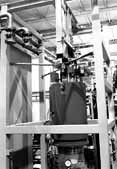
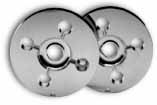 Significant work already underway
Significant work already underway
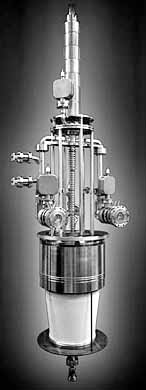 The U.S. is not alone in considering possible designs for a future, more powerful linear collider. DESY, in Germany, is studying designs for TESLA, the TeV Energy Superconducting Linear Accelerator, which would use superconducting devices to accelerate electrons and positrons to energy levels of about 0.5 TeV. Upgrades would later push the machine to 0.8 TeV.
The U.S. is not alone in considering possible designs for a future, more powerful linear collider. DESY, in Germany, is studying designs for TESLA, the TeV Energy Superconducting Linear Accelerator, which would use superconducting devices to accelerate electrons and positrons to energy levels of about 0.5 TeV. Upgrades would later push the machine to 0.8 TeV.
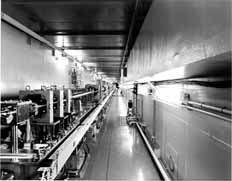 KEK is also studying designs for a 0.5 TeV electron-positron collider, with further upgrades into the TeV region.
KEK is also studying designs for a 0.5 TeV electron-positron collider, with further upgrades into the TeV region.
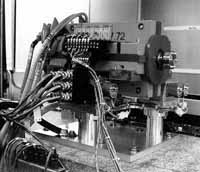 Permanent magnets?
Permanent magnets?